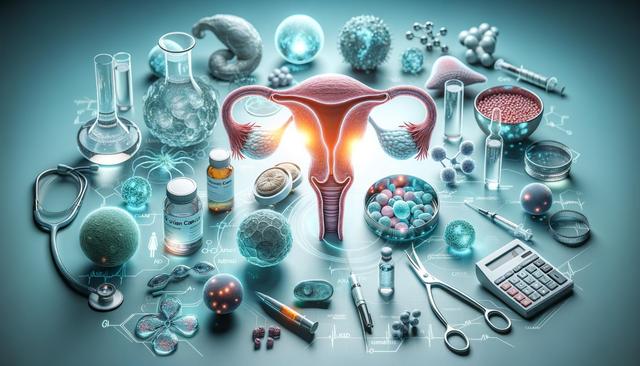Recognizing the Early Signs of Ovarian Cancer
One of the most important factors in improving outcomes for women with ovarian cancer is early detection. Unfortunately, ovarian cancer often presents with vague or subtle symptoms, which can delay diagnosis. Learning to recognize the early signs of ovarian cancer is essential. Common early symptoms may include:
- Persistent bloating
- Pelvic or abdominal pain
- Difficulty eating or feeling full quickly
- Frequent or urgent urination
These symptoms can easily be mistaken for more common gastrointestinal or urinary conditions. However, if they persist for more than a few weeks, it’s important to consult a healthcare provider. Regular gynecological exams and awareness of personal and family medical history can also play a role in recognizing potential warning signs earlier.
How Ovarian Cancer Is Diagnosed and Staged
Once symptoms prompt medical attention, a series of diagnostic tests help determine whether ovarian cancer is present. Understanding how ovarian cancer is diagnosed and staged is vital in creating an effective treatment plan. Diagnosis typically involves a combination of:
- Pelvic examination
- Transvaginal ultrasound
- Blood tests (such as CA-125)
- Imaging scans like CT or MRI
- Biopsy or surgical exploration
Staging refers to how far the cancer has spread and is usually confirmed during surgery. Ovarian cancer stages range from I (confined to the ovaries) to IV (spread to distant organs). The stage impacts both the treatment approach and the likely prognosis. Accurate staging helps guide decisions on surgery, chemotherapy, and other therapies.
Treatment Options Based on Cancer Type and Progression
Ovarian cancer is not a single disease; it encompasses several types, including epithelial tumors, germ cell tumors, and stromal tumors. Treatment options based on cancer type and progression vary significantly. The most common initial treatment is surgery to remove the tumor, often followed by chemotherapy. Depending on the stage and cancer type, other options may include:
- Targeted therapies
- Hormone therapy
- Radiation therapy (less commonly used)
- Participation in clinical trials
For early-stage cancers, surgery alone may be sufficient, while advanced stages often require a combination of treatments. Treatment plans are tailored to the individual, considering overall health, cancer type, and response to initial therapies.
The Role of Specialized Gynecologic Oncology Services
Receiving care from professionals who specialize in gynecologic cancers can significantly impact treatment outcomes. The role of specialized gynecologic oncology services is to provide expert care through a multidisciplinary approach. These services typically offer:
- Access to experienced surgeons with specific training in gynecologic oncology
- Coordinated care involving medical oncologists, radiologists, and pathologists
- Support services such as counseling, nutrition advice, and survivorship planning
These specialized teams are equipped to manage complex cases and adapt treatments as needed. They also offer patients the opportunity to participate in clinical research, which may provide access to newer therapies not widely available. This integrated approach helps ensure that every aspect of a patient’s care is aligned with current standards and emerging science.
Personalized Cancer Care and Emerging Treatments
The landscape of ovarian cancer treatment is evolving, with personalized cancer care and emerging treatments offering new hope. Advances in genetic testing now allow doctors to identify specific mutations, like BRCA1 and BRCA2, which can influence treatment strategies. Personalized approaches may involve:
- Targeted therapies that focus on cancer-specific genetic markers
- Immunotherapy aimed at enhancing the body’s own immune response
- Maintenance therapies to reduce the risk of recurrence
- Use of PARP inhibitors for patients with certain genetic profiles
These developments have led to more individualized treatment plans that improve outcomes and reduce unnecessary side effects. Ongoing research continues to explore novel interventions, including combinations of existing treatments and entirely new drug classes. Staying informed about these options and discussing them with a healthcare provider ensures patients receive care that reflects the latest advancements in oncology.
Conclusion: Empowering Women with Knowledge and Resources
Understanding ovarian cancer treatment is a vital step for women facing this diagnosis. From recognizing the early signs of ovarian cancer to exploring treatment options based on cancer type and progression, being informed can lead to better outcomes. Access to specialized gynecologic oncology services and an awareness of personalized cancer care and emerging treatments further empower patients to make confident, informed decisions. For women and their families, knowledge truly is a powerful tool in navigating the challenges of ovarian cancer with strength and clarity.



Leave a Reply